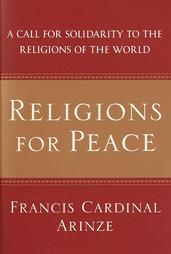- Français
- |
- Booklist
- |
- Week of Prayer
- |
- Links
- Areopagus - a forum for dialogue
- Academic journals
- Acronyms
- Bible tools
- Bibliographies
- Booksellers and publishers
- Churches
- Canadian church headquarters
- Directory of Saskatchewan churches
- Retreat centres
- Saskatchewan church and non-profit agencies
- Ecumenism.net Denominational links
- Anabaptist & Mennonite
- Anglican
- Baptist
- Evangelical
- Independent episcopal
- Lutheran
- Methodist, Wesleyan, and Holiness
- Miscellaneous
- Mormon
- Orthodox (Eastern & Oriental)
- Para-church ministries
- Pentecostal / charismatic
- Presbyterian & Reformed
- Quaker (Society of Friends)
- Roman & Eastern Catholic
- United and uniting
- Documents of Ecumenical Interest
- Ecumenical agencies
- Ecumenical Booklist
- Ecumenical Dialogues
- Glossary
- Human rights
- Inter-religious links
- Justice & peace
- Lectionaries
- Religious news services
- Resource pages
- Search Ecumenism.Net
- |
- Documents
- Ancient & Medieval texts
- Ecumenical Dialogues
- Interreligious
- Anabaptist & Mennonite
- Anglican
- Evangelical
- Lutheran
- Orthodox
- Reformed & Presbyterian
- Roman & Eastern Catholic
- United & Uniting
- Miscellaneous churches
- Canadian Council of Churches (CCC)
- Conference of European Churches (CEC)
- Interchurch Families International Network (IFIN)
- National Council of Churches in Australia (NCCA)
- Lausanne Committee for World Evangelism (LCWE)
- World Council of Churches (WCC)
- Other ecumenical documents
Church traditions
Documents from ecumenical agencies
- |
- Dialogues
- Adventist-Reformed
- African Instituted Churches-Reformed
- Anglican-Lutheran
- Anglican-Orthodox
- Anglican-Reformed
- Anglican-Roman Catholic
- Anglican-United/Uniting
- Baptist-Reformed
- Disciples of Christ-Reformed
- Disciples of Christ-Roman Catholic
- Evangelical-Roman Catholic
- Lutheran-Mennonite
- Lutheran-Mennonite-Roman Catholic
- Lutheran-Reformed
- Lutheran-Roman Catholic
- Mennonite-Reformed
- Mennonite-Roman Catholic
- Methodist-Reformed
- Methodist-Roman Catholic
- Oriental Orthodox-Reformed
- Orthodox-Reformed
- Orthodox-Roman Catholic
- Pentecostal-Reformed
- Prague Consultations
- REC-WARC Consultations
- Roman Catholic-Lutheran-Reformed
- Roman Catholic-Reformed
- Roman Catholic-United Church of Canada
- |
- Quick links
- Canadian Centre for Ecumenism
- Canadian Council of Churches
- Ecumenical Shared Ministries
- Ecumenism in Canada
- Interchurch Families International Network
- International Anglican-Roman Catholic Commission for Unity and Mission
- Kairos: Canadian Ecumenical Justice Initiatives
- North American Academy of Ecumenists
- Prairie Centre for Ecumenism
- Réseau œcuménique justice et paix
- Week of Prayer for Christian Unity
- Women's Interchurch Council of Canada
- World Council of Churches
- |
- Archives
- |
- About us

Religions for Peace: A Call for Solidarity to the Religions of the World
Arinze, Francis Cardinal
Doubleday, 2002
ISBN: 978-0-3855-0460-7,
Subject:
From Amazon.com
In the wake of the September 11 attacks on the U.S., Religions for Peace confronts a baffling paradox. If all the major religions of the world promote peace, why is it that we find ourselves waging so many wars in the name of God? Francis Cardinal Arinze has devoted his life to facilitating dialogues between the leaders of numerous faiths around the world. Although he is based in Catholicism, Arinze offers a beautifully rendered chapter on how the major religions revere peace (including Judaism, Islam, Buddhism, Sikhism, and Taoism). "In the past 17 years," writes Arinze, "I have not come into contact with the follower of any religion who does not regard his or her religion as in favor of peace."
So what's going wrong? The root of the problem, according to Arinze, is intolerance, the inability to respect other religions, races, and cultures. He devotes most of his book to what individuals and religious groups can do to promote world peace: emphasize the holiness of tolerance; be willing to see how your religion has perpetuated violence; provide information on "the negative and terrible effects of war"; and join together to pray for peace. --Gail Hudson
From Publishers Weekly
Whatever one's perspective on religion, the events of September 11 have convinced even skeptics to take seriously the role of religion in world affairs. Here, Nigerian-born Arinze reminds readers of the power religions have when they engage in prayer, joint initiatives for peace and other acts of solidarity. He encourages religious leaders to "conscientize" their followers, as well as to foster the study of other religions. Peace, he reminds us, has no religious frontiers; rather, all religions must contribute to a common peace. As head of the Pontifical Council for Interreligious Dialogue, Arinze provides examples of such contributions from his own experience. In particular, he usefully references many important interfaith gatherings and initiatives, as well as teachings and peace programs from the Catholic Church. For Arinze, interreligious dialogue is not simply an appeal to what religions have in common. Instead, participants are to speak with integrity from their own respective normative traditions, even as differences arise. Unfortunately, in asserting the voice of his own tradition, Arinze curtails the dialogue by defining religion in largely Christian terms and by imposing official positions of the Catholic Church (religions for peace, he avers, will oppose abortion). Moreover, in failing to adequately distinguish religious fundamentalism (a literalist reading of sacred texts) from the violent implications of religious extremism, he excludes important dialogue partners from fundamentalist traditions.


